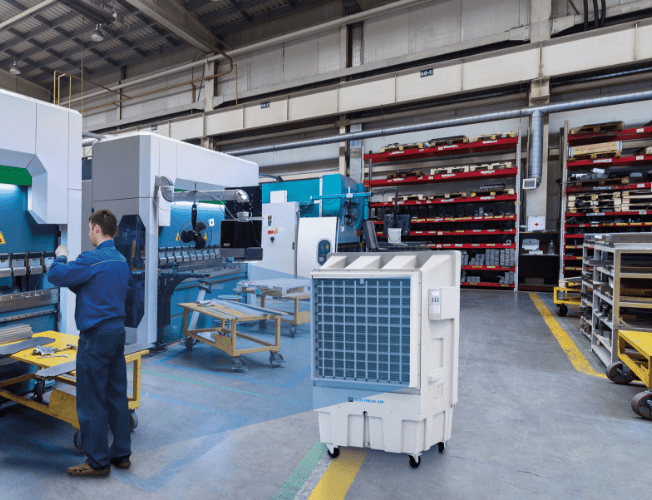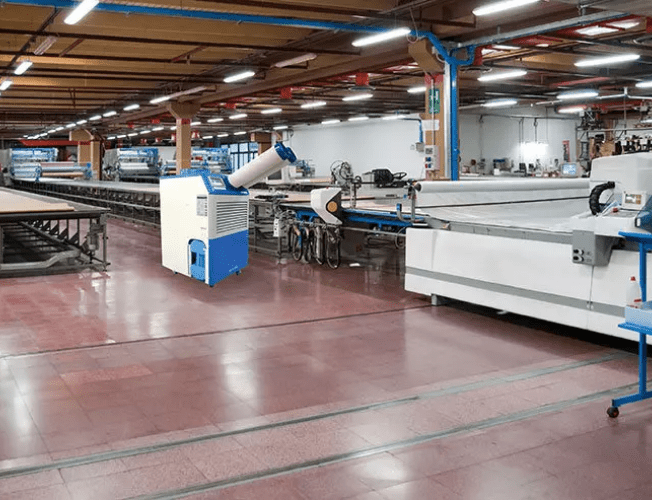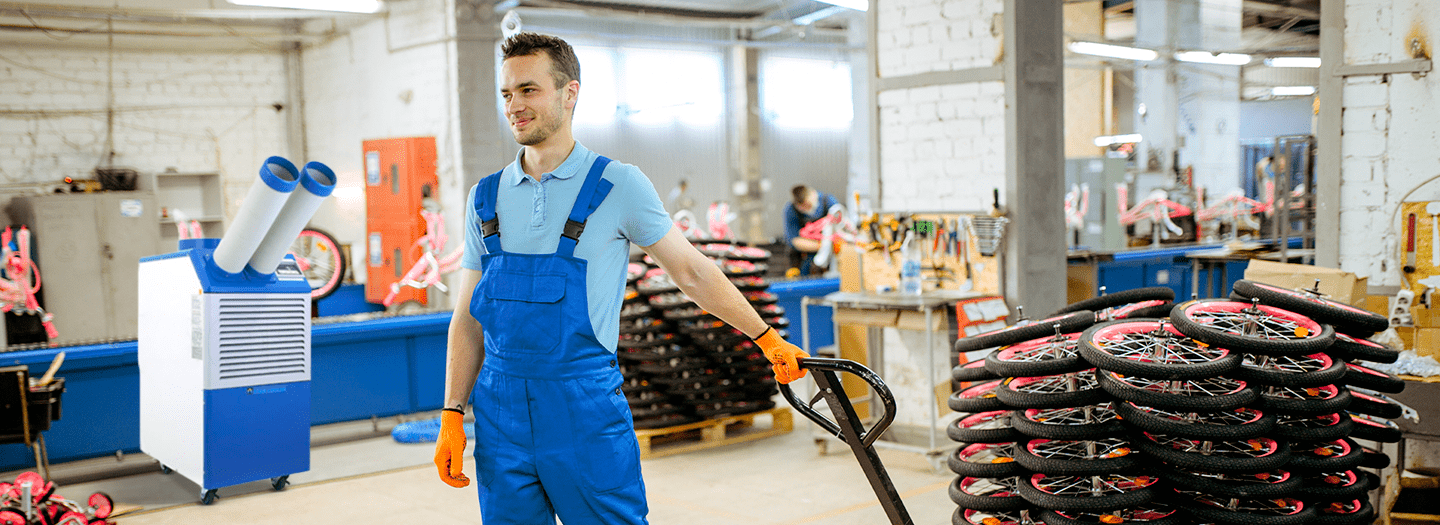
During hot seasons it is unthinkable to be without a cooling system, especially outdoors or in large industrial spaces. To create a safe and comfortable environment for your customers or employees by lowering the perceived temperature by a few degrees, you can try the efficiency and practicality of evaporative cooling.
But how much does an evaporative cooler consume? Let’s do some calculations together.
Which evaporative cooler to choose?
There is not just one evaporative cooler, but there is one for every size and type of room. There are coolers for outdoor spaces in bars, restaurants and various types of commercial establishments, suitable for being outdoors and among customer tables. But there are also much larger and more powerful coolers, perfect for cooling even industrial spaces larger than 500 square metres. The first step, therefore, is to understand which evaporative cooler is right for your specific circumstance.
The good news, however, is that any evaporative cooler consumes relatively little. That’s right, because although the perceived temperature can drop even more than 6 or 7 degrees, the power output hardly exceeds 1,200 W and, generally, the most compact portable systems have a power output of around 200 W to 400 W.

How much does an evaporative cooler consume?
As you may have guessed, to calculate how much an evaporative cooler consumes, we must first find out the power of our system, measured in watts. If we want to calculate the average consumption of a patio cooler, we can consider a model with about 300 W, while for an industrial cooler we can assume a model with twice that much power.
To do this calculation, it is necessary to understand how much energy our systems consume within a given time interval. By convention, we use kWh, i.e. how many kW are consumed in one hour, and then, to work out how much money we have spent indicatively, we multiply these kWh by the cost of our current electricity tariff.
Let’s try to do this calculation together: the current national unit cost of electricity is about 0.11 €/kWh (which is still not bad compared to the very high peaks reached in 2022).
- Let us consider a panel of approximately 300 W power, i.e. 0.3 kW which, for one hour of use, is 0.3 kWh.
- To understand the expenditure in euros per hour of use, we have to multiply the kWh by the current price of our electricity, which, as we said before, is about €0.11 per kWh. The result is €0.033 per hour of use of an evaporative cooler of about 300 W of power.
- To find out how much we could spend in a month, let’s assume we use our 300 W evaporative cooler for 6 days, for at least 8 hours a day. We then calculate the kW for the whole month (0.3 kWh *8h *24 days = 57.6 kW) and multiply this by the cost of electricity: 57.6* 0.11 €/kWh = €6,336.
Yes, right now, a 300 W evaporative cooler switched on for at least 8 hours a day, 6 days a week, consumes about €6 per month.
And, logically, an industrial evaporative cooler of about 600 W consumes about €12 per month, roughly twice as much.

The advantages of evaporative cooling
Evaporative cooling, as we have just shown, costs very little in relation to other cooling and air conditioning systems, but what are its advantages?
To understand its advantages, we must explain very briefly how it works. Simplifying as much as possible, an evaporative cooler uses the natural phenomenon of evaporation to spread fresh, clean air: warm air in the room passes through a water-soaked cellulose panel, which retains heat and evaporates, releasing fresh air and lowering the surrounding temperature.
- Cooling is immediate and localised, with no energy waste.
- It works easily and consumes little compared to other cooling systems.
- It is ideal for the outdoor spaces of a venue as well as for large industrial spaces.
- An evaporative cooler is sustainable and environmentally friendly because energy consumption is low and it takes advantage of the natural phenomenon of evaporation.
In addition, Star Progetti evaporative coolers are also safe for our health, as they are fitted with a UV filter that prevents the formation of mould and bacteria.
